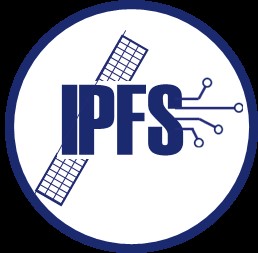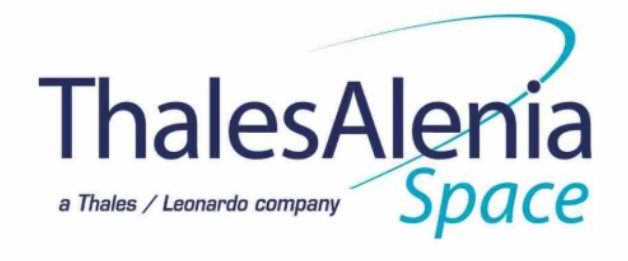
-
StatusOngoing
-
Activity Code1B.140
The Intelligent Platform for Constellations Study (IPFS) represents the initial phase of a strategic initiative aimed at developing a highly autonomous architecture for future satcom constellations. As satellite constellations become more complex to manage, the need for advanced platform autonomy and greater integration of Artificial Intelligence (AI) will grow significantly. The same is expected to happen to the whole system, therefore, even if this project focuses on the space segment, ground and general operational requirements are considered.
The first step is the identification of applications and relevant ConOps, by investigating different scenarios: standalone satellites, fleets and constellations. The most promising use cases are selected based on their potential benefits, evaluated up to the end-to-end system level. Further on, the baseline architecture and building blocks are defined, including solutions for AI integration, while considering industrial implementation aspects and operational impacts.
It is important for the proposed solutions to be widely supported by the entire European space sector and in harmony with its supply chain. Consequently, a consultation with key industrial stakeholders has been conducted in order to gather feedback and needs. The study concludes with feasibility assessment of future in-orbit experiments (IOE) and preliminary implementation strategy for preselected autonomous functionalities.

As the project strives for greater autonomy, it faces several challenges related to integration of Machine Learning (ML)-based software into spacecraft systems: lack of established standards in the space sector; the need for dedicated V&V process tailored for AI methodologies; edge processing cyber-security threats.
Moreover, there is a paradigm shift for ground operators and facilities, coupled with the absence of procedures for model re-training and fine-tuning. The implementation of these ambitious goals require at the present stage the use of Commercial Off-The-Shelf (COTS). High-end alternative solutions will be progressively scaled up as soon as the currently under development Rad-Hard option will become available.
The expected outcomes of the project consist in disruptive advancements in the satellite operations concept, leveraging AI and ML technologies to enhance autonomy, efficiency and reliability in space missions.
Preliminary business case analyses indicate that if successfully implemented, the solutions proposed by the IPFS project would result in numerous benefits. First of all, an Intelligent Platform (in a future Intelligent E2E ecosystem) allows improvement in autonomous operations in space with consequent optimisation of operators tasks and reduction of cost, minimising human intervention and risk of errors. More complex space missions are enabled and ground personnel may focus on other ambitious tasks.
In addition, the intelligent platform is able to adapt to changing conditions (e.g. satellite failures or expiration of life) in real-time, increasing system and mission reliability. For instance, the enhanced satellite reactivity provided by the intelligent functionalities offers the opportunity for SatCom latency-sensitive services.
In the framework of a future intelligent system, higher degree of autonomy is achieved by shifting on-board critical processes, such as:
- Real-time decision-making algorithms based on ML.
- Continuous health and performance monitoring.
- Autonomous routine for on-board RUL estimation.
- Enhanced anomaly detection.
- Predictive maintenance (based on Deep Learning).
The core functionalities and capabilities for fleets or constellation systems, involve distributed data processing among the satellites through AI computing modules, federated learning, autonomous reconfiguration of each single spacecraft and of the entire constellation topology, autonomous ISL building plan and network resources management.
The preliminary reference architecture for the intelligent platform represents a shift from traditional subsystem-based designs to an integrated solution that enhances efficiency and reduces complexity. Central to this architecture is the On-Board Computer (OBC), which consolidates functionalities typically distributed across separate subsystems, including transponder and GNSS capabilities.
For fleet and constellation applications, Inter-Satellite Links (ISLs) are crucial. The architecture offers two ISL options - an "RF omnidirectional link" and an "RF/optical link with a dedicated data router" - providing flexibility to meet mission requirements and ensuring reliable communication in dynamic environments.
To streamline the system, the design limits discrete lines by utilising modern serial links and distributing processing power across system edges. A high-performance COTS processing bench supports the OBC, enabling advanced AI and Machine Learning capabilities for autonomous decision-making.
A high-speed serial data platform, possibly using optical point-to-point links, serves as the communication backbone, leading to a dual-star topology with the OBC as the central node for redundancy.
The system study has a duration of 6 months. The main milestones include the kick-off, an intermediate review and final review (final presentation). Progress meetings organised monthly and as necessary.
Key events of the project are the industrial consultations: a first offline consultation at midway through the project and a second consultation at the end of the project.
The scope of such a tight timeline (together with the ongoing parallel issue of the first batch of de-risking technology activities in the frame of the intelligent system initiative), is to drastically reduce the time to market for the targeted advanced autonomy.
The IPFS project is currently ongoing. A thorough investigation of promising applications and use-cases has been performed considering the standalone satellite system, the fleet and constellation. Evaluation metrics have been discussed and used for the selection of three use-cases to be further extended in proper business cases. A preliminary architecture for the intelligent platform has been outlined; however, refinements are envisaged according to the feedback received from the first industry consultation.




